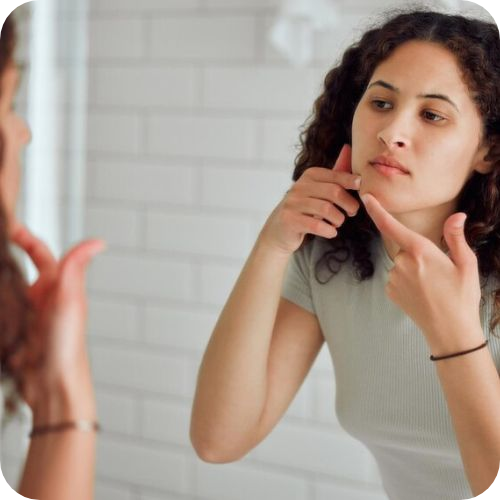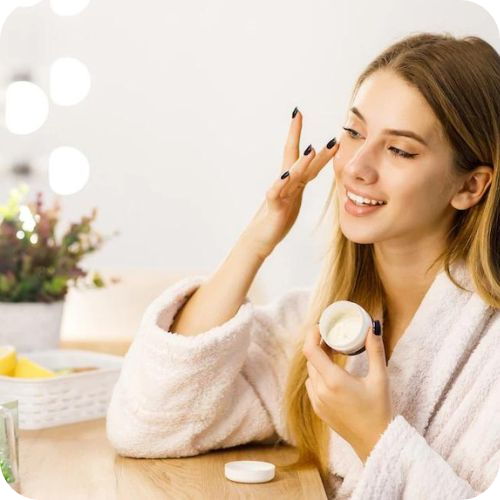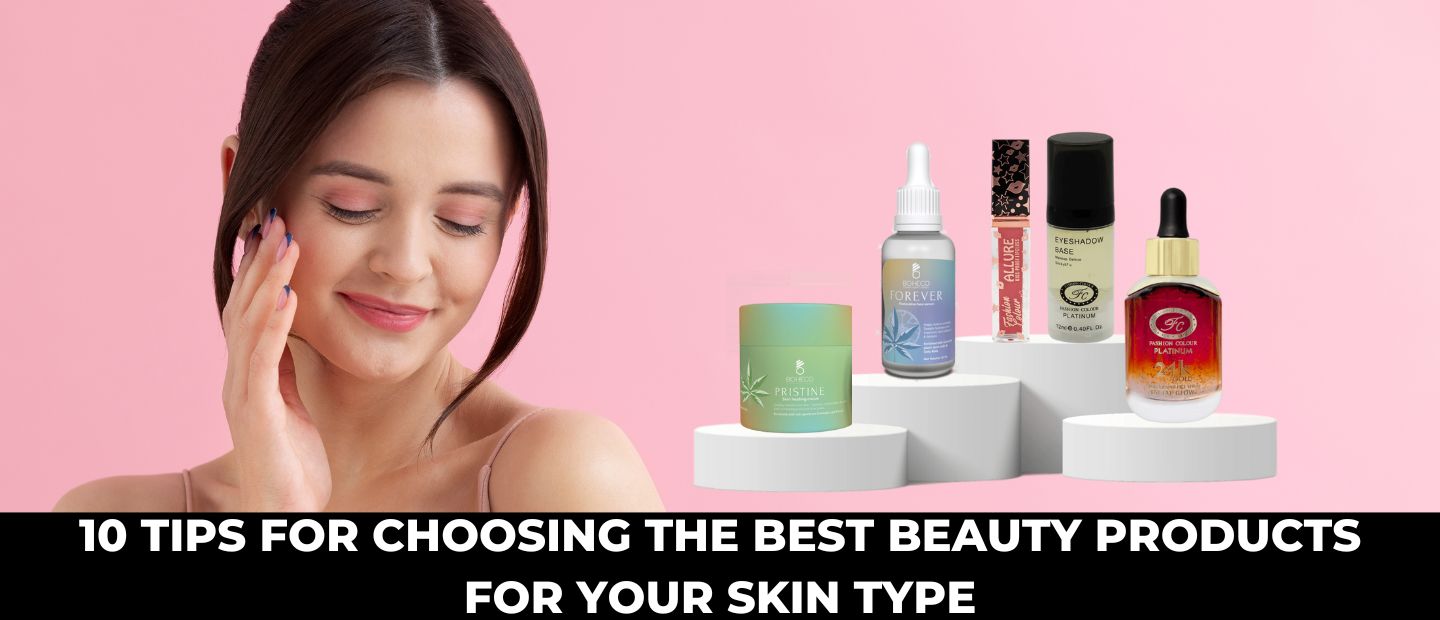When it comes to choosing beauty products, it can be overwhelming to navigate the vast array of options available. From skincare to makeup to haircare, there are endless products to choose from, and it can be difficult to know which ones are the best for your skin type and concerns.
To help you make informed decisions about your beauty purchases, we’ve put together a guide to choosing the best beauty products for your skin type. In this article, we’ll cover 10 tips for selecting the right products for your skin and your needs.
1. Determine your skin type:
The first step in choosing the best beauty products is determining your skin type. Is your skin oily, dry, in combination, or sensitive? Understanding your skin type will help you choose products that are tailored to your specific needs.
For example, if you have oily skin, you may want to look for products that are designed to control oil and shine, such as a mattifying moisturizer or a clay mask. If you have dry skin, on the other hand, you may want to look for products that are rich in moisture, such as a nourishing cream or facial oil.
2. Read ingredient labels:
Once you know your skin type, it’s important to read the ingredient labels on beauty products to make sure they are suitable for your skin. Look for ingredients that are known to be beneficial for your skin type and concerns, and avoid ingredients that are known to be irritating or drying.
For example, if you have sensitive skin, you may want to avoid products that contain fragrances, alcohol, or sulfates, as these can be irritating. If you have acne-prone skin, you may want to look for products that contain salicylic acid or benzoyl peroxide to help clear breakouts.

3. Look for non-toxic and natural ingredients:
In addition to looking at the ingredients in beauty products, it’s also important to consider the overall safety and sustainability of the products you use. Look for products that are made with non-toxic and natural ingredients, as these are generally safer and more gentle on the skin.
There are many certifications and labels that can help you identify non-toxic and natural beauty products in India. Some examples include the BDIH seal, which indicates that a product is made with natural and organic ingredients, and the ECOCERT seal, which indicates that a product is made with natural and organic ingredients and produced in a sustainable manner. You can also look for the Natural Product Association (NPA) seal, which indicates that a product is made with natural ingredients and meets the NPA’s strict standards for safety and efficacy.
4. Check for product certifications:
Speaking of certifications, it’s always a good idea to check for product certifications when choosing beauty products. Certifications such as the USDA Organic seal and the Leaping Bunny seal can help you identify products that are made with high-quality ingredients and are produced in a sustainable and ethical manner.
Other certifications to look for include the EWG Verified seal, which indicates that a product has been evaluated by the Environmental Working Group and meets its standards for safety and sustainability.
5. Consider your skin concerns:
In addition to your skin type, it’s also important to consider any specific skin concerns you may have. Do you have acne-prone skin? Are you dealing with fine lines and wrinkles? Do you have hyperpigmentation or uneven skin tone?
Knowing your skin concerns will help you choose products that are specifically formulated to address these issues. For example, if you have acne-prone skin, you may want to look for products that contain acne-fighting ingredients such as salicylic acid or benzoyl peroxide. If you have fine lines and wrinkles, you may want to look for products that contain antioxidants or retinoids to help plump and smooth the skin.

6. Consider your skin tone and undertone:
When it comes to makeup and color cosmetics, it’s important to choose products that are suitable for your skin tone and undertone. Skin tone refers to the overall color of your skin, while undertone refers to the underlying hue of your skin, which can be warm, cool, or neutral.
To determine your skin tone and undertone, you can look at the veins in your wrist. If your veins are blue or purple, you likely have a cool undertone. If your veins are green, you likely have a warm undertone. If your veins are blue-green, you likely have a neutral undertone.
Knowing your skin tone and undertone will help you choose makeup and color cosmetics that flatter your skin and look natural. For example, if you have a cool undertone, you may want to choose shades of makeup that are cool-toned, such as purples, blues, and pinks. If you have a warm undertone, you may want to choose shades of makeup that are warm-toned, such as golds, oranges, and reds.
7. Do your research and read reviews:
Before you make a purchase, it’s always a good idea to do some research and read reviews from other users. Look for reviews from people with skin types and concerns similar to yours, as this will give you a better idea of how a product might work for you.
You can also check out beauty blogs and forums, as well as the brand’s website, to learn more about the products and the company’s values and philosophy.
8. Try before you buy:
If possible, try out a sample or a small size of a product before you commit to a full-size purchase. This will give you a chance to see how the product performs on your skin and whether it works for you.
Many beauty stores and brands offer sample sizes or deluxe samples with purchases, so take advantage of these opportunities to try out new products.

9. Don’t be swayed by fancy packaging or celebrity endorsements:
While it’s true that packaging can be an important factor in the appeal of a beauty product, it’s important to remember that what’s inside the bottle is what really counts. Don’t be swayed by flashy packaging or celebrity endorsements – instead, focus on the ingredients and performance of the product.
10. Don’t be afraid to spend a little more for high-quality products:
While it’s important to be mindful of your budget, it’s also important to remember that you get what you pay for when it comes to beauty products. In general, higher-priced products tend to be of higher quality and contain more beneficial ingredients.
Of course, this doesn’t mean you have to break the bank to get great beauty products. But if you’re willing to invest a little extra in high-quality products, you’ll likely see better results and have a more enjoyable skincare experience overall.
Conclusion:
With these 10 tips in mind, you’ll be well on your way to choosing the best beauty products for your skin type and concerns. Remember to determine your skin type, read ingredient labels, look for non-toxic and natural ingredients, check for product certifications, consider your skin concerns, consider your skin tone and undertone, do your research and read reviews, try before you buy, don’t be swayed by fancy packaging or celebrity endorsements, and don’t be afraid to spend a little more for high-quality products.
And don’t forget to visit Sabezy.com for all your beauty needs. We have a wide selection of top-quality beauty products from top brands at the lowest prices, including skincare, makeup, haircare, and more. Plus, we offer free shipping and exceptional customer service to make your shopping experience as convenient and enjoyable as possible.
So don’t wait – start shopping now and take the first step towards achieving your best skin yet! So, these are the 10 tips that you can follow while choosing the best beauty products for your skin type. Keep these in mind and you will surely find the perfect products that work well for you and give you the desired results.


